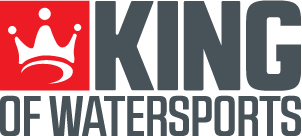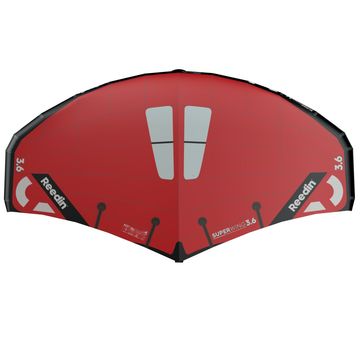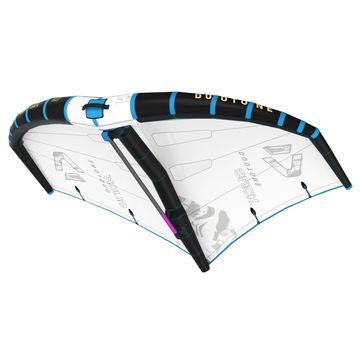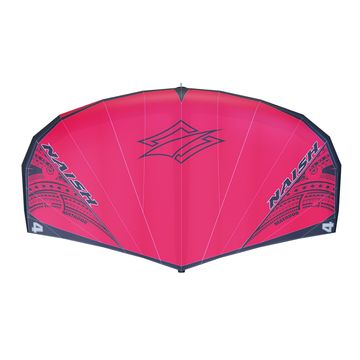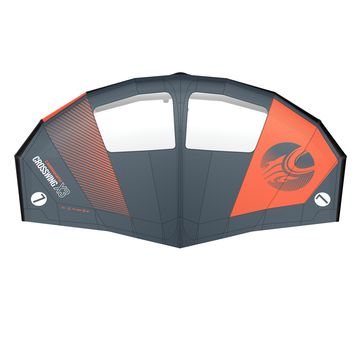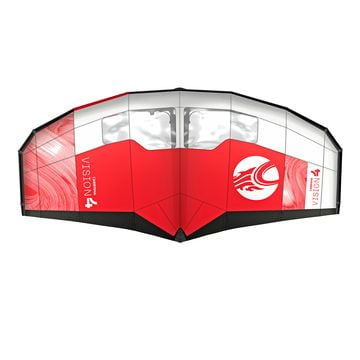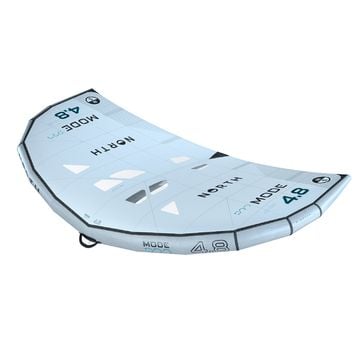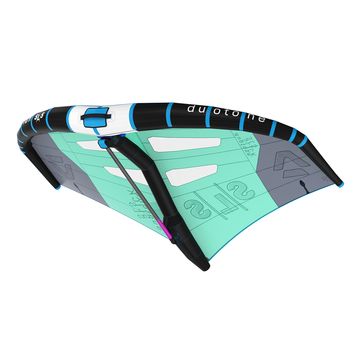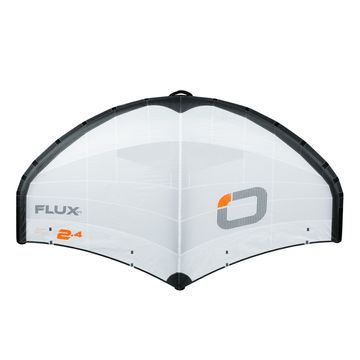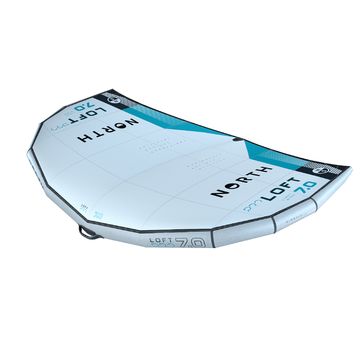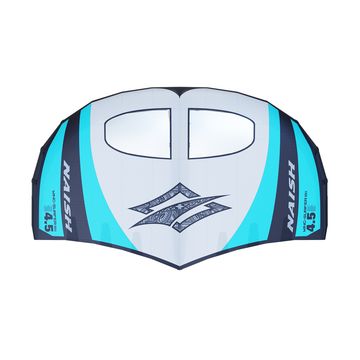Understanding Different Foil Shapes
Every brand now has a handful of hydrofoil shapes in their line up and multiple sizes in any one shape, meaning there is lots to get your head around. Here we try explain those shapes and help you find out which foil is best for you and the conditions you ride in.

If you are new to wingfoiling then have a look at our Wing Foil Buyers Guide here and this will explain everything you need to help find a foil for you but if you want to know a bit more behind the different shapes of foil and find out why there are so many and help to get an understanding of which foil is best for you then read on.
Like aeroplanes there are lots of different foils and each have their own area of intended use. If you picture a stunt plane and a glider you will see the wing shapes are massively different and so are there intended uses. This is exactly the same as with a foil and picturing these two plane wings will help give an understanding of what foil shapes do by comparing them to these planes.

The short stubby wings of a stunt plane give lots of manoeuvrability whereas the long skinny wings of a glider are really efficient and help keep the glider in the air for long periods of time with no power.
These two aeroplanes are not the only shapes we see across the whole range of planes out there. Every plane is designed for its intended use and the wing shape will help give the pilot the intended control necessary for the use required.
As foiling has progressed there has become many different disciplines within each aspect of watersports. Whether you are paddleboarding, surfing, kitesurfing, sailing or windsurfing there is now a foiling option of that sport and then there is wingfoiling as a complete new sport taking parts of several aspects of the above and blending them together. Within most of these foiling activities there are also different disciplines for you to keep your progressing with. Racing, wave riding, swell riding, freeriding and freestyle and the main categories but each discipline has different needs and then some people will blend many of the above in one session. You also get people riding the same conditions in different ways - some will like riding fast and some more cruisey.
No matter which of the sports you started your foiling journey on, it was probably on a bigger and easier to use foil than you are using now or looking to use next - unless you were an early kitefoiler who probably started on something quite small and fast. If you were one of the early adopters of foiling then you may not have had much choice in what you downsized to but now people looking to progress have a huge choice of front wings, stabilisers, fuselages, and masts to upgrade to and the choice can be pretty overwhelming.
So the question is what is the best foil for you?
With no straight answer to the question, it’s a case of narrowing down your choices. If you have already invested in a foil, then there is a very good chance you can just upgrade the front and rear wing and off you go. If you are looking to upgrade and change brand, then there is a world of choice but the below will still apply.
Front Wings
These are the biggest influence on your intended riding style. Wingspan, Aspect Ratio and overall size are the most common used terms in foils, but chord and thickness have a big influence of the speed and manoeuvrability of the foil too.

Size - As foils get smaller, they get faster and more manoeuvrable but the downside is they have a higher take off speed, meaning you will need to travel faster in order to take off.
Wingspan - The wider a foil is from wing tip to wing tip the harder it will be to roll from left to right.
Aspect Ratio - This is the ratio of how long and thin the wing is from tip to tip. The higher the aspect ratio the more efficient a foil will be once up to speed. This means you will glide further with no direct input from the rider than you would on a lower aspect foil.
Chord - The distance from the leading edge to the trailing edge of a foil. This will vary down the span of the wing and is where a lot of the overall size comes from. Most wings, the chord will taper in as you move away from the middle towards the wing tip, and this helps improve roll.
Thickness - Not often measured on a foil but directly relates to speed and lift. A thicker foil will create more lift at low speeds but will have more drag at higher speeds. A thin foil will be fast as less drag but it needs to be thick enough to stiff throughout the span of the foil.
Dihedral / Anhedral - This is the angle of the wings from horizontal. If you look at the wing directly from the leading edge the wing tips will either, be higher (dihedral) or lower (anhedral) than the centre of the wing. This can get pretty complicated but essentially a dihedral wing wont slide sidewise through the water as easily as a flat wing and more importantly a dihedral wing will help stabilise roll giving control in turns. An anhedral wing will reduce sideways slip of a foil, but it will reduce stability when rolling from left to right.
Foil Designers take all these aspects of foil shape into consideration and use a bit of a sliding scale to create a foil for different styles of riding. They will then scale up/down the design to get it in different sizes for different size and ability of rider and different speeds.
As an example, if you want a foil that glides well and still turns, you need something wide with a high aspect ratio and reduced chord towards the wing’s tips and perhaps a bit of anhedral upturn towards the wing tips too. Sadly, the width won’t allow for snappy sharp turn some people will want on a wave and this is why there are so many foils.
Essentially if you want to the best gliding foil, it will never be the sharpest turn foil and vice versa. If you go to the extremes to get the best performance in any one attribute then you usually make a sacrifice in terms of performance of another attribute.

Each discipline for each sport will require something slightly different and although there is cross over the demands of each rider will vary depending on the conditions they ride, their ability and how they like the foil to feel and this is why you can change mast, fuselage and stabilizer.
Mast Height - Learning any foiling sport on a shorter mast is easier as the angles you can create are not as great meaning you are more likely to bounce back up from any mistake. The downside is the foil will start to come out of the water (breach) as you turn tight or go out in bigger chop and therefore becomes harder to control as your skill progress. Keeping the wing of the foil near the surface is more efficient and you will glide further ride smaller waves easier and have better pumpability when the wings are nearer the surface and this is easier to control on a shorter mast. If you are banking the foil over lots to control power, then a longer mast gives you more height whilst banked over.
Fuselage length - The length of the fuselage helps with pitch (up and down) stability. The longer fuselage the more pitch stable the foil will be and vice-versa. When carving the foil, a shorter fuselage will create a smaller turn radius.
Stabilizer shape and size - The stabilizer helps balance the front wing to give more control at different speeds and whilst turning. Your foil does not need a stabilizer to perform but to perform well across a mix or conditions and at different speeds it is essential. The best way to think of a stabilizer is the same as when choosing a front wing and if you want to get slightly more or less performance out of your setup then a bigger/smaller/flatter/thinner stabilizer is a good way to do that.
Some brands have a huge range of stabilizers and fuselages that will change the feel of your current setup and other brands only have one or two options which keeps things simple. Depending on the type of person you are will probably depend on how much experimenting you will do with different parts. As a rough rule of thumb, if you reduce the size of something it will make the setup sharper in turns and faster (twitchy or lively) vice-versa if you want to get some more stability then you need to increase the size.
A good example of changing your set could be for people racing or looking to go faster. You need to use the smallest front wing you are comfortable on. At the fastest speeds you may find the foil becomes twitchy or lively so to combat this a longer fuselage should help slow down the pitch instability. A small stabilizer will help with top end speeds but one with up turned wing tips will help improve yaw stability. Part of the art of going fast is having stability to allow you to push harder.
Riding waves in any of the foiling sports becomes a bit unclear on what you should do to tweak your setup. As you progress in waves you tend to ride bigger and faster waves. If you are on a bigger foil at some point, you will not be able to go as fast as the wave in control so you will need to change down a front wing. Also, as you start linking turns on a wave face you will need to be travelling faster as you are covering more distance on the wave. Going down foil sizes will give you more speed but if you go downsizes but go up in aspect ratio you may find you gain speed but don’t get much of a smaller turn shape. Intermediate foilers getting onto a more advanced front wing may encounter this issue as they change the type of front wing they use. If you are already on an advanced foil and just stepping down a size or two of the same range a smaller foil will have a narrower wingspan and will there for turn tighter even though the aspect ratio may be the same.
For those wanting to pump and link waves together you will find a higher aspect foil is easier for this as its efficiency will give more glide but maybe a mid-aspect ratio foil is the best of both turning and pumping.
The best way to determine what you want from your foil is to decide what conditions you are riding in or are looking to ride in, and you have to be realistic. Theres no point looking at Kai Lenny or James Casey and saying I want what they have unless you are riding the same conditions as them. Having multiple setups is the key to having the best performance for every condition but its not exactly friendly on the wallet.
A performance based mid aspect foil with a couple of stabilizers and maybe two fuselages is going to give you the most range in performance for the most range in conditions. Mid aspect currently is about a 7 aspect ratio.

Masts
Most people will have started off on an alloy mast as it keeps the price down on a complete foil setup. As you progress and push the foil harder you will probably notice some flex when turning hard, pumping or jumping. You may have even bent an alloy mast at some point. This flex tends to be most noticeable if you mast is long (80cm+) or you are pushing hard on a larger foil (1300+).
Should you go for a carbon mast?
Not all carbon is built equal. Like most things in life the quality of carbon varies and what you will see next to most of the more expensive carbon masts are the words "high modulus" or "HM". And this means the carbon has been through a more expensive heat treatment process in production which gives a higher stiffness. It’s also more brittle so a lot of testing needs to be done to get a good HM mast (think Formula 1, lots of testing to get right).
Standard carbon is cheaper than HM carbon but not as stiff and sometimes not as stiff as high-grade alloy, but it is lighter. This this flex and weight varies as each manufacturing process is different and they will lay the carbon up in different ways with different thicknesses trying to create a mix of good strength and weight at a reasonable price point.
The thickness of a mast varies from brand to brand as well as the chord and this is the main reason foils are not interchangeable from brand to brand without third party parts. This thickness is what gives a mast its strength and most mast taper out towards the top as this is where the most force is on a mast (just below where the top plate joins the mast). The thinner the mast the less drag it has so to create a thin and stiff mast, high modulus carbon is used.
Choosing to go for a carbon mast is usually led by budget but the performance gains should be noticeable almost straight away. Weight is probably the smallest gain and really you only notice that when carrying your kit. Speed should increase as the drag is reduced but the biggest gain should be stiffness in which the best/most expensive masts get rid of the flex/sponginess and this means every foot movement translates through to the wings.
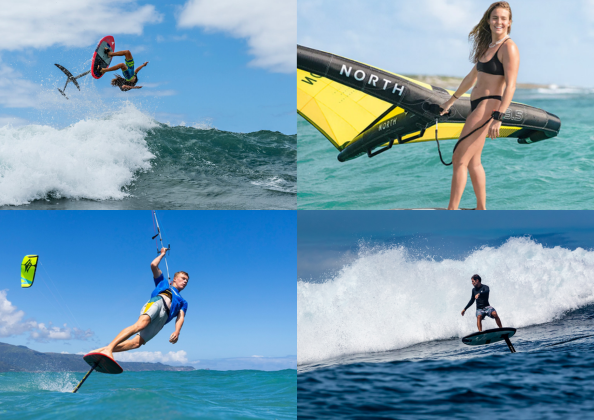
Overall, you will always take the information from your current setup to determine what you want to achieve next. Most people will change front wing first as that is the biggest change in performance you can get in a single change, but we always get people asking, "can I just change the front wing?" and the simple answer is yes. You can but if you are coming from a bigger foil you will have a bigger stabilizer and maybe a longer fuselage and therefor you will not unlock the full capability of the new front wing in terms of speed, glide and turn shape but a great way to keep the price down and grow into a new set up and then upgrade the stabilizer and fuselage when time and budget allow.
Another question is "can I use my current foil for another foiling discipline?" Again, it’s a yes but not straight forward yes. Foils all work in the same way - forward speed creates lift. So, the main difference in the different sports is that forward speed is hugely different. Take dock starting as an example - the initial speed is very low so you need a foil that creates lift at low speed, but it needs to glide well. These two parameters mean you need a big foil that is high aspect, so the small foils wont crossover but the mast and fuselage might.
Prone foiling is growing as a sport and the foil you are currently using will probably work but bigger foils may make the take off and pop up hard/impossible as the wave will push you from paddling speed which isn’t enough to foil to suddenly full foiling speed whilst you’re trying to get up. You can push the foil back in the track to help keep the lift under control, but this will be harder to ride once you are up and going. So potentially a smaller foil with less lift will be easier to learn.
Ultimately your skills will define whether you can make your foil work in other disciplines but there is plenty of cross over especially with the mid-size range of foils. A foil that can ride small waves on a wing can ride small waves on a paddle board or kite you can ride a wake behind a boat.
Content created by King of Watersports KOW Copyright
